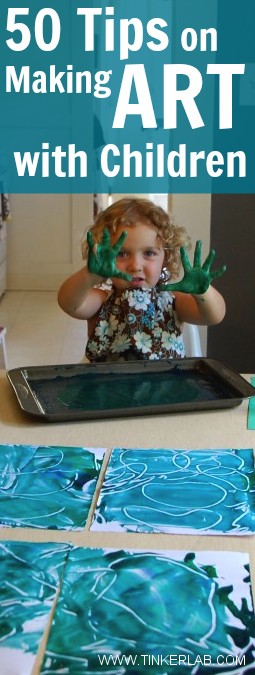 What do you wish you had known about kids art projects? This is a question that I asked my team of expert parents and teachers as a way to help the next crop of parents learn from our mistakes and wins!
What do you wish you had known about kids art projects? This is a question that I asked my team of expert parents and teachers as a way to help the next crop of parents learn from our mistakes and wins!
As a mom and as an arts educator who’s buried deep in the process of writing a book about children and the creative process, I often think about which tools other parents could use as they begin their journey into making and experimenting with little people.
Although I’m happy to share my opinions (I have a blog, after all!), I also believe in sharing the perspectives of other parents and childhood experts. Your home, point of view, schedule, and situation are not mine, and while you may respect my perspective as a parent and seasoned educator, if I can present you with multiple voices you may hear one that resonates with you or you may take comfort in hearing the same idea repeated from more than one source.
In this spirit, I asked the following questions of my circle of preschool teachers, parents, bloggers, and Facebook friends:
What do you wish you had known about making art with children? What tips do you have for parents who are just starting out?
I received over fifty thoughtful responses, which led me to collect them into one useful spot and group them into categories that could help us learn from each other. If you have something to add, won’t you please share it in a comment so your experience can inspire other parents or teachers as they begin their art-making journey with children.
So, let’s get started…
You Don’t Need Special Skills to Guide Kids Art Projects
Anyone can set up and facilitate art projects with young children — special credentials or experience are not a prerequisite!
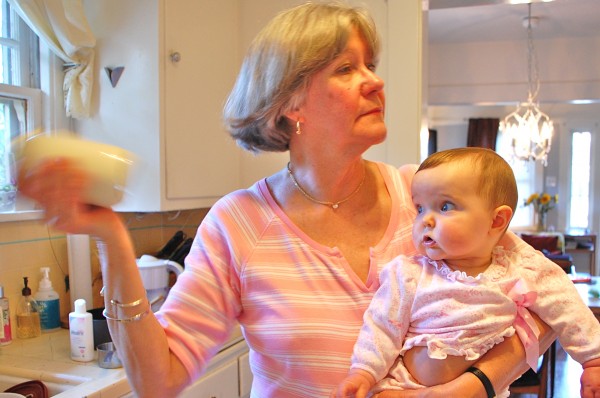
Not to avoid it or be intimidated if you yourself are not artistic (like me). Learning that the process is more important than the outcome has been important for me in doing art with my kids. — Jennifer F.
You don’t need to plan art projects–just get the supplies! And be sure to create with them too! — Megan S.
Art, for me, is all about the process and treating everyone as an artist. With kids this really develops their own inate creativity. So it’s about supplying the materials and standing back and supervising. — Lesley Ann, Early Play
You don’t have to be a great artist to do great art experiences with children. I was really fearful of doing art with children at first because of doubts about my own art abilities. Fortunately I was put straight by a lecturer during my studies who assured me that all I needed to do a great art program was learn a range of developmentally appropriate art activities and techniques and implement them through play – whether I was a “good artist” was irrelevant. She was right and it was some of the best advice I’ve ever got! — Alec Duncan, Child’s Play Music
Process Art is more Important than Product
Focus on open-ended, process-driven projects rather than projects that have a specific outcome in mind.
Enjoy the process and don’t worry about the end result. — Helen, Curly Birds
The process is the most important, not the result. I enjoy taking a few photos during to look back on the various stages. Also bear in mind that most but not all kids like messy. My son has autism and doesn’t like painty fingers or toes so brushes or sponges are a must for us. Fun to ‘paint’ using a computer programme too — Amy G.
Process over product: show them HOW to use materials when necessary (to show respect for things) but don’t show them WHAT to make. It breaks my heart whenever a new preschooler tells me, “I don’t know how. Will you do it for me?” or asks, “What should I make?” during art. They are so used to being bossed around and having things done for them that it takes awhile for them to trust me when I say, “This is your art. You get to make it however you want.” Once they do they can’t get enough! — Christina H.
The process is what’s important…if you had planned on your project looking like “x” and it ends up looking NOTHING like “x,” who cares!? While there is a time for learning to follow directions there are no rules in art! — Alyson H.
It’s very easy to try and make them (art) turn out how you want/expect it to, which (this) takes the creative process (away) from them. You may just end up with 10 pages of paintings that only have one brush stroke- but it’s their creative process! I found it incredibly hard to stand back and let him go at first! — Kara P.
I wish I had known about process vs product and about open-ended projects where materials are presented as an invitation to create with no particular end project in mind – just letting my child explore the materials in whichever way he wanted. — Ness, One Perfect Day
Think process not product. Allow your child to experiment with materials without the end in mind. When they ask if you like it, answer with a question like, “Do you like it? Because you’re the artist!” Give compliments that withhold judgement, “Look at all the colors of the rainbow you used” versus “pretty colors”. — Melissa Taylor, Imagination Soup
Make it accessible to them, create alongside them, and don’t be worried about the final product. The process that got you to the end (exploring, imagining, creating) is the part that really matters. — Kristen, Busy Kids Happy Mom
Debbie from Pre-K and Sharing wrote this very popular post on the difference between process-based art and product-based crafts, Children’s Art: Process versus Product.
When my daughter was a toddler, I fretted too much when she only wanted to watch me create rather than picking up the material and exploring with it herself. Now I realize that I didn’t need to worry. Observing a process is her way of learning. –Rebekah, The Golden Gleam
I think the biggest tip is that projects aren’t an hour long especially with really young kids. Many are 5 minutes and that’s ok they are still benefiting from it. –Allison, No Time for Flash Cards
I wish I had thought to tell my oldest that art can’t be wrong. Everbodys’ art looks different…that doesn’t make one right and one wrong…just unique. That would have taken the pressure off of him and off of me. I was going for “perfect”. — Becky
Embrace Messy Kids Art Projects
Art-making can be messy, but the mess is worth it and there are strategies for managing the chaos.
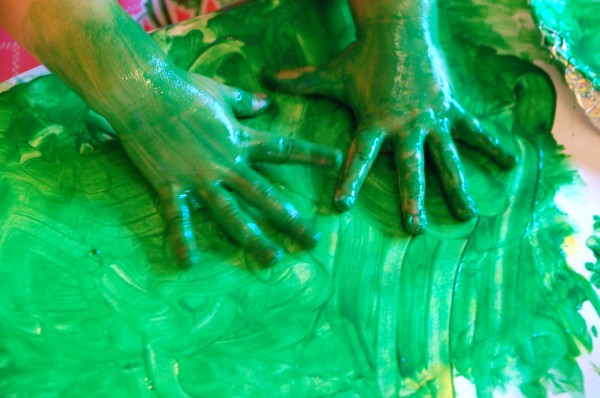
Kids are washable, creating memories is more important than clean hands and clothes, and a vinyl table cloth on the floor will contain just about any mess a kid can make anyway. 🙂 I do all of this with my daycare kids, but I wish I’d thought this way when my own boys were little 10 years ago! — Jackie, Happy Hooligans
A mess is what’s BEST! It’s all about the process, not the finished project. — Tiffany K.
That it will be 100% messier than you think, the time taken will range from seconds to hours, and as long as the children are having fun then consider the experience a success regardless of end product and mess. — Zoey S.
Embrace the mess! And be okay with them being done with a project much sooner than you had planned. — 365 Great Children’s Books
Mess-proof your house, or do art in the bath, then you wont worry about anything and you can both freely enjoy the creative or sensory process. — Katherine, Creative Playhouse
Set up and sit down. Enjoy the show and be ready for a bath after. — Leslie, Cute and Peculiar
Art does not have to mean “messy”! Mainy parents I know are scared of paint. If you are one of them, that’s ok, but don’t let that stop you exploring art! There are so many other ways too… Pencils, pens, crayons. Sculptures from wood, junk, clay. Collages from magazines, fabrics, photos. Tissue paper and newspapers.– Maggy, Red Ted Art
I wish I had thought to set messy art activities up in the bath from the beginning. The bath is a fantastic place to let children engage in painting and other messy creative activities (as is the kitchen floor) When Rosie first began creating, I set the activities up at our easel but Rosie’s creative space was limited and I had to worry about the surrounding surfaces. Now, I mostly set messy activities up outside or in the bath so that she can explore freely and I don’t need to worry about stains or getting paint in the carpet. Then, once Rosie is done, she is right where she needs to be to get clean. — Crystal, Growing A Jeweled Rose
Painting for kids is sensory play so it’s ok if all they want to do is empty half a ton of paint onto the paper and squish it with their hands. It’s not a waste of paint and its not a creative fail, it’s just not YOUR idea of art. But that’s ok. — The Monko, Taming the Goblin
Consider your Art Materials
Choose quality, child-friendly materials and display them attractively in an easy-access location.
One of the most important things to do is also the easiest — simply make art materials available to your children. If markers and paper are out and accessible, kids will use them. Same with playdough, paint, tape, scissors, anything. You don’t have to have a “project” in mind. Kids have fun and develop creativity when they have the freedom to explore art materials and ideas in their own way. — Jean, The Artful Parent
For young children it is all about investigating and inventing using a range of open-ended materials with no end-purpose in sight. Free range access to a variety of textures, colours, shapes, media and tools will promote creative thinking and the freedom to experiment without any pressure. Keep materials in easy access baskets and buckets in a specially designated making area, and find wall space for displaying their finished masterpieces with pride! — Anna, The Imagination Tree
I wish I had known, you really only need the primary colors, white, and black paint for little ones. — Rebekah, The Golden Gleam
Put your age-appropriate art supplies so they are accessible for the kids to get at! That means different supplies for different ages and stages. Start with basics (crayones, markers, blank paper) and as children grow, add more variety (glue, scissors, paint, etc). Then buy a bunch of magic erasers. You’re more likely to do art everyday if everything is visible and accessible. — Miss Allison’s Art
i think its important to spend a bit more money on a bit better products, it safes you children from frustration, cheap crayons dont give off color easy, same goes for cheap watercolors and markers, also if you use cheap paper it fast becomes a mess, just a tip from an arts and crafts teacher! see my page. — Luna H.
Not all “washable” markers really are. Don’t bother with place mats as table protection, the kids can’t seem to keep their work there. Just have a vinyl tablecloth for art time and use it for every project. — Gina S.
Go to a beach if you can! It’s like one big giant interactive canvas! So much fun and sculpting goes beyond sandcastles. — Juliet, I’m a Teacher, Get me Outside Here
Let children choose what they want to do. Give a limited amount of supplies because with too many they may lose focus. Keep it simple….kids like materials like pens and paper. Once in awhile throw in some fun materials like google eyes or glitter. Adding in a magic supply makes all the difference. — Melissa , Chocolate Muffin Tree
I wish I had known earlier how important those moments with my littles – drawing, coloring, cutting, just being next to one another creating – would be to me. Making art together is by far one of my favorite past times and theirs as well. I added a planter box full of crayons, a galvanized tin for pencils, markers and scissors, and an old crate for holding papers to our dining room. Hands down the best addition to our house as a whole. I highly encourage others to do the same and take full advantage of all the opportunities this will create for you to connect with one another. — Stacy of KSW
I wish I had just set out the materials and let him create more often. My son has great ideas. –Deirdre, JDaniel4’s Mom
Buy an easel early as possible – we’ve only got ours this week and I regret not getting it earlier – to have a space always set up for art to take place means that they will go and create – with chalk with crayons, with pencils and with pens that are all set up. In 1 week our drawings have gone from squiggles to circles with eyes, nose, nostrils, mouth and sharp teeth with legs, arms and sometimes even ears – My 17 month also uses it to start creating on as well (Rainy Day Mum) — Cerys, Rainy Day Mum
Be the Guide on the Side
Your role is to facilitate the art-making process by drawing out your child’s best self without telling your child what to do.
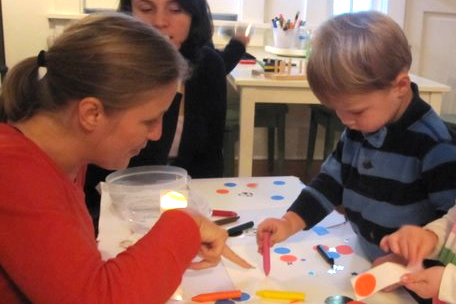
I have always encouraged parents to sit and observe their child in the act of the process. Being present is in itself a support. Parental observation is in itself encouragement. There is an ‘art’ to offering support and encouragement to a child that comes from genuine and sincere questions and interaction. “Tell me how it feels to have your hands in that _________.” “I notice that your crayon is going round and round and that the circles are getting bigger all the time in this part of your project.” Open ended questions always work well. “What is your favorite part?” Of course it goes without saying that having ‘art-supplies’ available in the home is an asset. Using ‘supplies’ that are on hand – ads from junk mail, a pair of scissors and scotch tape can also yield informative exploration, when coupled with permission, support, time and interaction. Just like children who see their parents reading in the home become readers themselves, so it is that children that are surrounded by parents/adults who are creative and creating — see the artistic process as similar to breathing. It’s what we do. We create. — Debbie, RainbowsWithinReach
Let them lead – have the materials of choice there on offer and let your child(ren) tell you what they want to use and what they want to do with it. Guide them, but don’t get stressed if they don’t want to follow the ‘normal’ rules about what happens with a paintbrush or a crayon! (within reason, of course…). — Michelle D.
Be quiet! Sometimes it is best to silently observe. Too much feedback can encourage/create praise-junkies and it’s easy to say the wrong thing, like guessing what the picture is when a child is simply experimenting with textures and colors. If you cannot control the urge to say something, be sure to just make simple observations, not judgments. –Liz S.
Be enthusiastic about creativity and making art – it’s contagious. — Chrissy, The Outlaw Mom Blog
I’ve taught art for many years in a preschool setting, and I also work with toddlers (18 mos the youngest). All of the advice I see here is accurate. I’d also encourage you to use open ended words or questions when inquiring about your child’s art (if you must)..”tell me about your picture/painting/sculpture”…compliments such as “that’s very colorful!” “I noticed you were using the paintbrush gently, etc”. instead of “oh how beautiful”;” that’s pretty”. I use quality materials and I do demonstrate with the little ones so they gain a respect for the materials. For instance, we talk about having our paintbrushes “dance” across the paper, rather than “scrubbing” the paper. Often times, a child will push so hard it creates a hole. While I don’t think that’s necessarily a bad thing, sometimes it makes them upset. — Anastasia F.
Don’t help them. Don’t ‘fix’ their art work. If you do that, they don’t feel any ownership of it. It’s the process that matters, not the product or ‘end result’- resist the temptation to interfere! — Candy. Aunt Annie’s Childcare
I wish I had realised it didn’t matter if it didn’t turn out how I wanted it to – they are still proud of a brown mess because they did it themselves! My mantra is ‘step away from the paintbrush mummy’ — Sarah, Mummyology
Be patient, flexible, and open minded. Relax. Let go of control and go with the flow. It is supposed to be fun! If you or your child are not having fun, you need to stop and evaluate. — Katie, Playing with words 365
Take some deep deep breaths, let go of controlling the situation and believe 100% in that what the children are doing! — Angelique Felix, The Magic of Play
I was glad when I learned to talk to my children about heir art in appropriate ways, asking them to tell me about what they were making instead of making value judgements and always trying to “name” what they were creating. — Amy, Mama Scout
I’ve known people who would go back and color in after the child has already colored, because they don’t want to be embarrassed by someone seeing the end result and not thinking their child did a good job. My response has always been, “It doesn’t have to be perfect, it just has to be perfect in their eyes.” Likewise, I have to agree with the above comments. Don’t get the kids ideas; they’ll come up with them on their own. Use good quality products.– Leann, Montessori Tidbits
Let them have fun, don’t worry about the end result. –Ticia
Organize Your Art Materials
An organized art space will give you a greater chance for success as well as peace of mind.
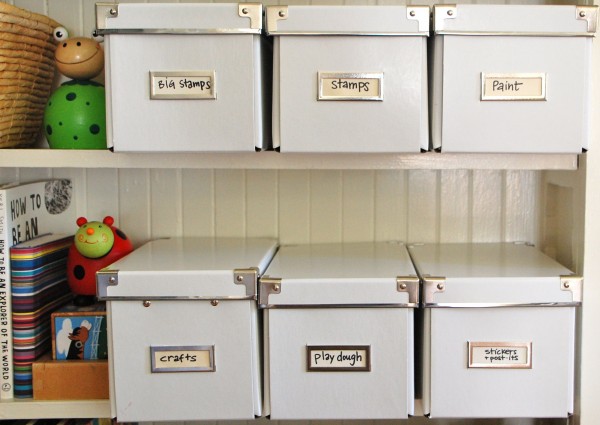
I think organization tips- start early so you dont end up with a pile of art. –April Z.
I really wish we would have made our art center a part of our play area sooner. The kids make the neatest additions to their play on a daily basis and I know it’s because everything is accessible. — Jillian, A mom with a lesson plan and author of Raising a Creative Child
Give children the opportunity to revisit their art. Create a space where you can leave ‘work in progress’ and place simple documentation, photos with the pieces to inspire the child and to allow opportunities for reflection. –Shona S.
Make a Plan for Success
Once you have your supplies and a space to create, these questions can guide you through the art-making process with your child.
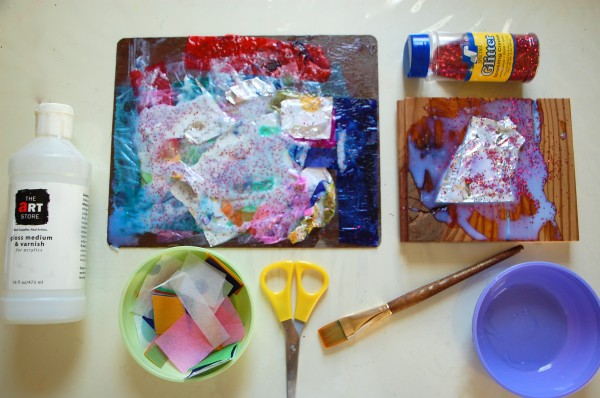
There is a difference between craft and art. Choose projects that allow your child to express themselves and their own ideas through the exploration and manipulation of open ended materials. The five questions shared in this post aim to help parents to choose the best creative projects for their own child/ren — Christie, Childhood 101
I wish I had never been shown how to make a paper plate apple so it didn’t take me so many years to look past the paper plate apple and into what really matters when it comes to inspiring young children in the realm of art.
My advice would be – as you choose what you want to do with your child, use these four questions to guide your decision-making…
- What will my child actually get to do (not make)?
- What art products will my child actually get to use or explore?
- What art tools will my child actually get to use or explore?
- Will my child find any of these tools, materials, and things to do interesting?
If these four questions can be considered as you plan, then you will find art to be far more than a paper plate apple, but instead art will be an engaging and enriching experience for you and your child. — Deborah Stewart, Teach Preschool
When I first started out, I was told that we had to “teach” children “how” to use materials. Now, I often put a variety of materials out and let them explore and create without any of my preconceived notions. We only have 3 rules:
- Wear a smock
- Use a tray. (For smaller projects we work over large trays that can be dumped and washed easily by little people. Also, more fragile projects can be moved in situ to dry, without disturbing the project.)
- Help clean up when you are done.
I am continually amazed and surprised by the art the children generate on their own, without adult expectations of an outcome. Even for “projects” that we do as a group, I may put out materials that will probably be needed, but the children know they are free to use any or all materials in our art center. Anything and everything goes! Ayn, Little Illumunations
Did you enjoy this post?
In case you blinked and missed it, Tinkerlab rounds up all the great stuff on the internets on keeping you and your critters creative and wraps it up for you in a tidy newsletter! (And throws in some secret giveaways for good measure!) – Yuliya P., San Francisco, CA
Join our community and you’ll learn:
- How to simplify your life and make more room for creativity
- How to make hands-on making a part of your everyday life
- Easy, actionable ways to raise creative kids
What do you wish you had known about making art with children?
What tips do you have for parents who are just starting out? Share your tip in the comments!
Note: Links may connect you to websites that are Tinkerlab affiliates. Clicking on these links help keep this mom-and-pop blog running. Thank you!

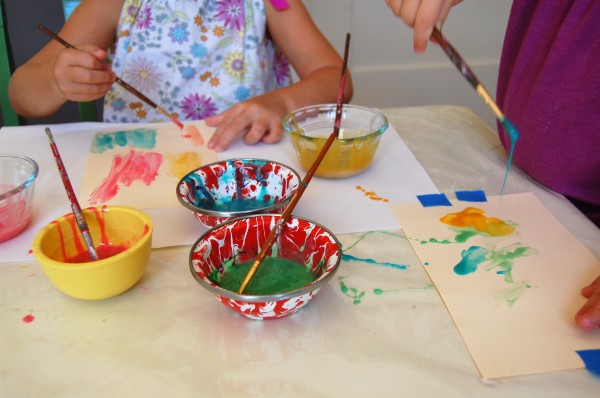
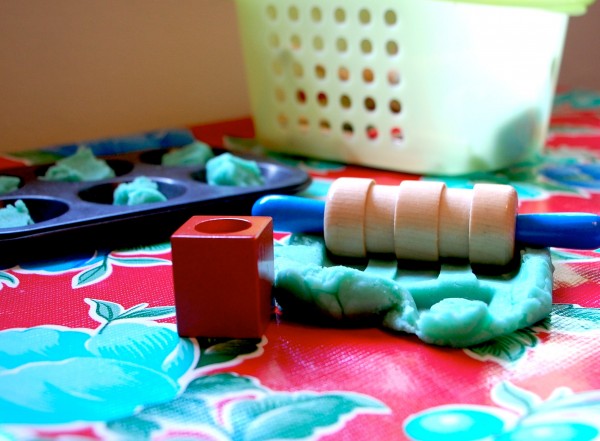

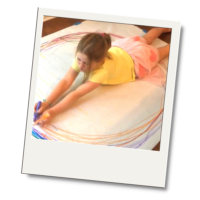
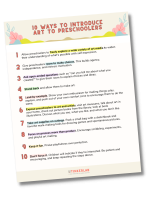
Thanks for including me! This is an amazing post filled with so much wisdom!
And thank you for contributing to this collective wisdom, Amy!
I love this post, Rachelle. It makes me think about when my girls were toddlers! (they started kindergarten today)
This is a big day for you, Helen! How did it go? I know what you mean — there’s something very specific and beautiful about the early years of art-making, and I’d love to see my own kids retain the joy of it as they grow older.
Wonderful article! I’m excited to share it on Facebook. Thanks for including me!
~Miss Allison, http://www.missallisonart.com/blog-my-26-hour-days.html
This is great! I’m so glad that contributors explained process vs. product. I’d always heard the phrase, but never understood it. Great examples and ideas in this list. Thanks!
I loved reading your comment, Kristen. As an art educator, Process v. Product seems to be an old argument and it’s helpful to remember that it’s a fresh idea for so many parents. I’m glad to hear that the example helped explain this — I think the contributors did a great job too!
This must have taken AGES to compile. Thanks very much for including everyone’s responses including my own.
Well done and I hope others find the post helpful too.
Best wishes
Juliet
Hi Juliet, Thanks so much for sharing your thoughts about exploring art in the great outdoors. ~Rachelle
This is such a wonderful post Rachelle. So much wonderful wisdom with an over-riding theme of just let kids be creative, embrace the mess and have fun! Thanks so much for including One Perfect Day as well. I’m honored to be part of this.
I agree with you Ness; all of the contributors (you included) are full of so much wisdom and generosity. I hope this post will continue to be a useful resource for parents.
When I started to take Ece classes to become a preschool teacher one of my professors wisely told me that boys need to do art they can then go can play with it. As a mother of two boys I wish I had know this earlier. For my own students I have found that if I want more boys to try the art curriculum I put out for the day I need to make it three dimensional or something they can use instantly. Art that is like an open ended science experiment also gets their attention!
Isn’t that interesting, Kay? As much as we may like to think that boys and girls are created equal (well, they are, of course), they do generally have very different approaches toward interacting with the world. Thanks for the great suggestion to cater projects toward the child’s interests, energy, and attention spans.
Great list! I happened across the book Young at Art, by Susan Striker, when my daughter was a baby and found her guidance invaluable – and most of its principles are encompassed by this list.
The one thing I wish I’d known to watch for (and am still unsure how to handle) is the influence of peers, at even very young ages. My daughter was so free and adventurous and surprising and confident in her artwork as a toddler and 2-year-old, when her art experiences were all at home. But after the first year of preschool she “regressed” artistically and became more confined in her choices, and I believe it was to fit in with her classmates. At age 4 1/2 she hardly chooses to do art projects at all, which makes me sad. I overhear other children crticizing one another’s work (“Don’t just scribble,” “Giraffes aren’t red,” etc.) and wonder how that affects her, whether it keeps her from wanting to experiment for fear of doing it “wrong.”
Thanks for great ideas. I always loved art in school, but it’s been so long since I’ve done anything other than photographs, I don’t know where to start with my 2 year old! I’m going to have to try fingerprints, but I’m worried about the mess! He loves coloring, so I’m certain fingerprinting would be super awesome.
Anyway, great article!
Hi Rachelle!
This is such a great post that I have been thinking about for a while. One of the greatest gifts of being a mother has been watching my two daughters personalities emerge as they grow.
I guess the biggest surprise for me as a parent is that there are so many people waiting in the wings to tell children what is beautiful and what is not, what is interesting and what is not, and what is for girls or boys and what is not. I think of art as a way of waving your flag and saying,”hey you missed this, isn’t it beautiful/ interesting/evocative?” Children are already there. They already see the entire world as a place filled with things that are beautiful and awesome and new.
As a mother I feel it’s my duty to protect this intuitive creativity my daughters already possess, and I’m excited that so many other parents feel the same way!
Thank you so much for sharing this thoughtful list of opinions and ideas!
I love this post. I love the culmination of so many experiences in this one fantastic resource on how to approach art with young children. I am teaching my first art class to under 5’s tomorrow and I revisited this for a bit more preparation and because I knew I wanted to write myself a little cheat sheet of some of the things I had read in this post before starting the class. I love creating with my children and have definitely fallen into the traps of teaching as a complete novice. I look forward to bringing these lessons and those that my own children have taught me to other Mums as well.
This is one of the most valuable written posts about art making experiences with children that I have ever read….thank you soooooooooo much. I will be sharing this with all my groups for their inspiration.
Hi Lisa,
You’re so welcome, and thank you for sharing it with others. Hopefully this will help more parents.
Warmly, Rachelle
Good day! This iis kind of off topic but I need some guidance from an established blog.
Is it very difficult to set up your own blog?
I’m not very techincal but I can figure things out pretty quick.
I’mthinking about creating my own but I’m not sure where to
begin. Do you have any tips or suggestions? Appreciate it
My relatives always say that I am killing my time here at net, but I know I am getting knowledge all the time by reading thes
good posts.
Thanks for give me a great idea .
“Thank you for the blog. I really liked the way you explained about the science project. I have been also buying my innovative project ideas ece for my project from Prayog India and there you will find many varieties of kits. For more information visit at https://www.prayogindia.in/
“